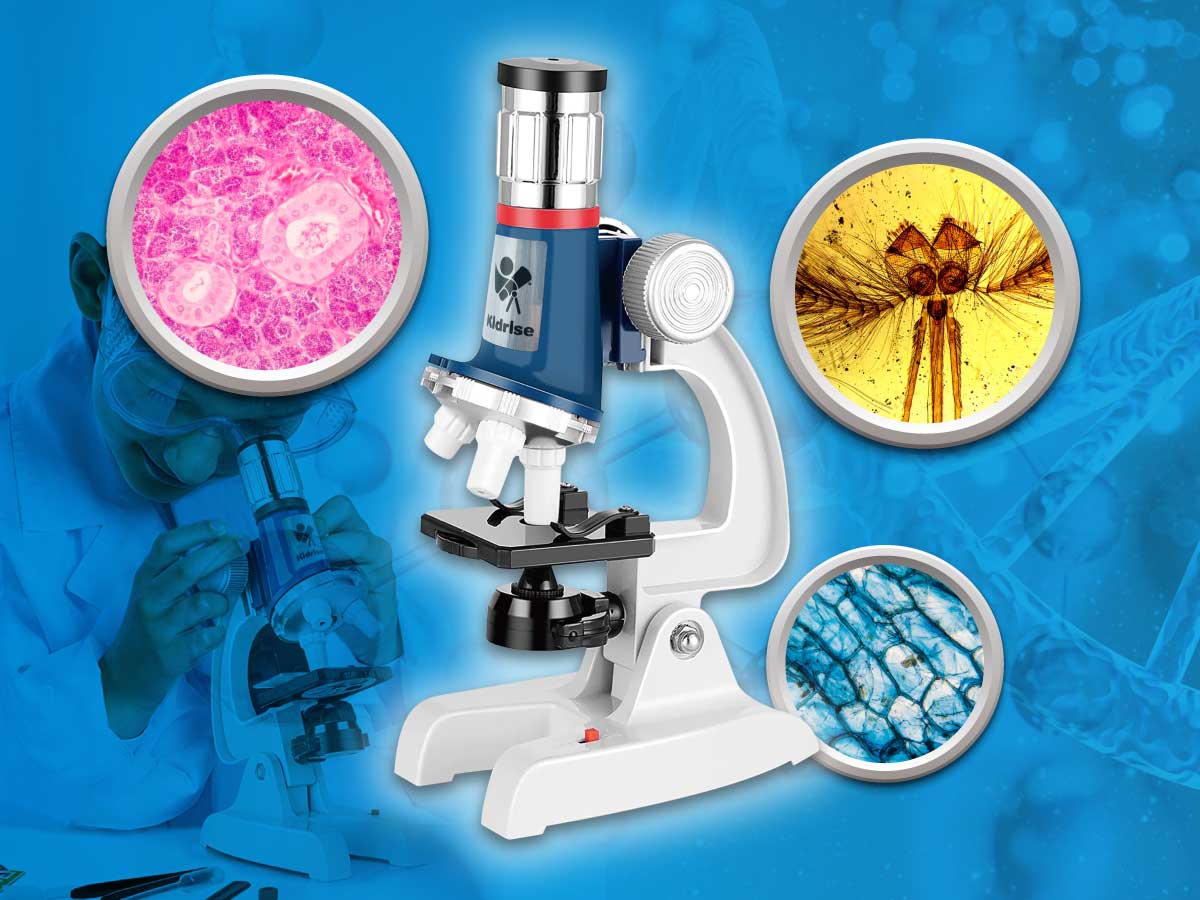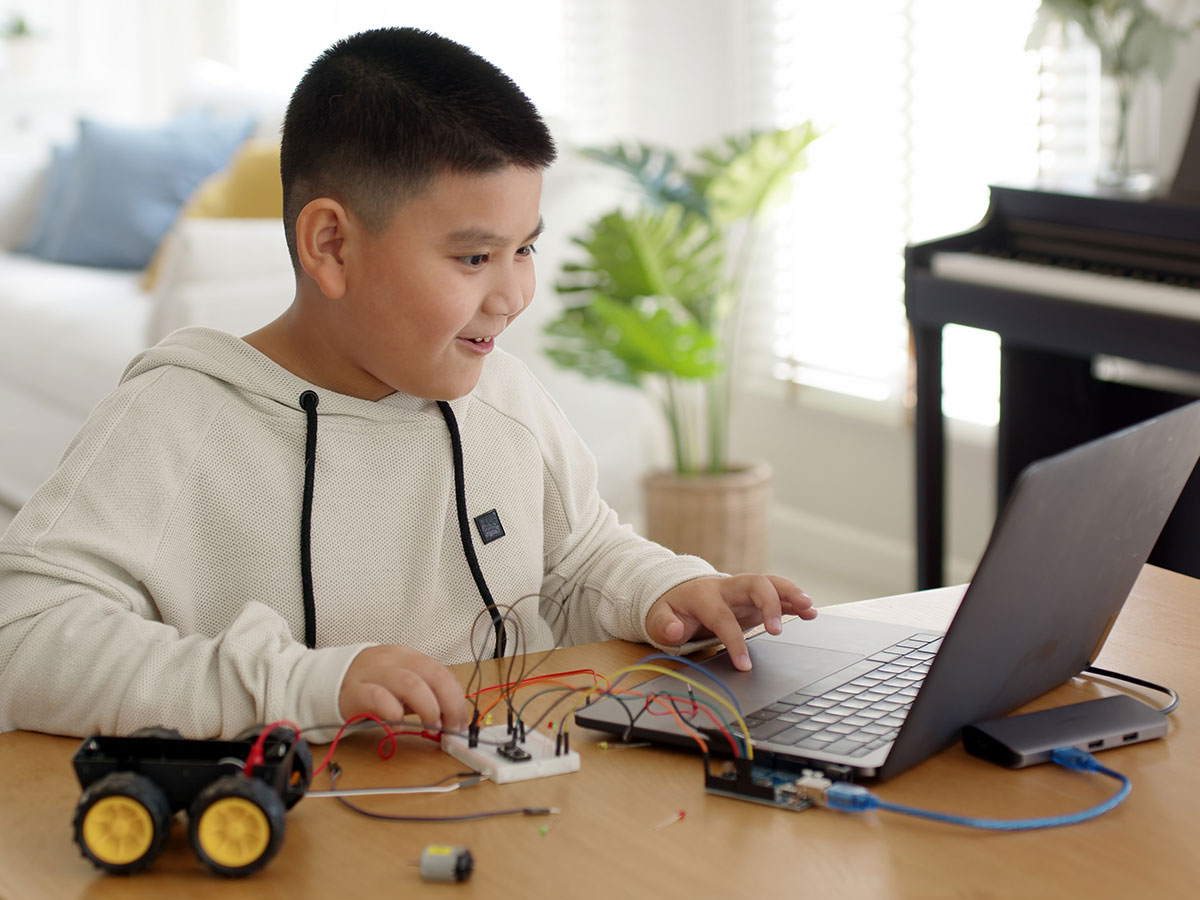
Explore the microscopic world with a microscope
Cover
Course Name:Explore the microscopic world with a microscope
Target audience:Primary or secondary school students (adjustable according to actual needs)
Course time:About 4 hours (including breaks and discussion time)
Lecturer:[Teacher's Name]
Production Unit:Kidrise STEM Education Team
Table of contents
- Course Description
- Learning objectives
- Detailed course flow
- Evaluation method
- Teacher Resources and Support
- Course summary and reflection
Course Description
This course takes the microscope as the core, starting with understanding its structure and working principle, and gradually guides students to carry out practical operations, sample observation, data analysis and report writing. Through a series of experimental activities and interactive discussions, students will learn the skills of using a microscope, master methods of observing the microscopic world, and further develop scientific inquiry and creative thinking abilities.
Learning objectives
Basic knowledge
- Understand the structure and function of the main components of a microscope (such as objective lens, eyepiece, condenser, focusing device, light source, etc.).
- Understand the basic concepts of magnification, resolution, etc., and understand how these factors affect observation results.
Practical operation
- Master the basic operation procedures of the microscope, including sample preparation, correct focusing and light adjustment.
- Learn to use different microscopes to observe different types of samples (for example: onion skin, leaf slices, microorganisms in water).
Scientific Inquiry
- Ability to record and describe observed characteristics of cells, microorganisms, or other tiny structures.
- Develop the ability to organize data, draw charts and write laboratory reports.
Creative thinking and application
- Students are encouraged to formulate hypotheses about their observations and explore their practical applications in biology, chemistry and environmental science.
- Through group discussion and collaboration, we stimulate cross-disciplinary innovation and problem-solving capabilities.
Detailed course flow
Part I: Theoretical Introduction (45 minutes)
Content and objectives
- Microscope structure and working principle explanation:
- The structure and function of each part of the microscope (objective lens, eyepiece, focusing device, condenser, light source, etc.) are explained through diagrams and multimedia slides.
- Explain basic concepts such as magnification and resolution, and how they affect image quality and observation results.
- History and application introduction:
- Share important discoveries made by microscopes in scientific development (such as cell discovery, pathogen observation, etc.).
- Explore current application cases of microscopes in fields such as biology and materials science.
Teaching Strategies
- Use interactive presentations and video presentations to encourage students to ask questions and discuss in real time.
- Introduce simple quizzes or games to test students' understanding of basic concepts.
Part II: Practical Operations and Experimental Activities (90 minutes)
Content and objectives
- Sample preparation and production:
- Teach students how to make basic observation samples, such as microbial samples from onion skin, leaf slices, or water droplets.
- Demonstrate the correct method of mounting a sample on a slide and covering the sample with a cover slip.
- Microscope operation practice:
- Students are divided into groups to carry out practical operations and master basic techniques such as focusing, light adjustment and changing objective lenses.
- Teachers provide guidance on a tour to ensure that every student is familiar with the operation steps.
- Observation notes and preliminary discussion:
- After observing the samples, students record the phenomena, draw observation diagrams or take microscopic photographs.
- Share observations in groups and have a preliminary discussion led by the teacher.
Teaching Strategies
- Emphasis on hands-on operation and actual experience, and improving learning effects through group cooperation.
- Provide detailed operation instruction manual and demonstration video for students' reference.
Part III: Data Analysis and Report Writing (60 minutes)
Content and objectives
- Experimental data collation:
- Teach students how to organize observation records and perform simple data analysis (e.g., calculating cell size, density, etc.).
- Chart making and result presentation:
- Instruct students to present data in graphs and charts to help them visualize their experimental results.
- Writing of lab report:
- Provide a report template, including the purpose, methods, results, discussion and conclusion.
- Students are encouraged to write individual or group reports based on their actual operations and observations, and share their results.
Teaching Strategies
- Design examples and exercises to allow students to actually organize data and draw charts.
- Arrange teachers to provide feedback to students on a case-by-case basis to help them improve their report writing skills.
Part 4: Extension Activities and Creative Applications (30 minutes)
Content and objectives
- Creative application discussion:
- Inspire students to think about the application of microscopy technology in daily life, such as food safety testing, environmental pollution monitoring, etc.
- Discuss your creative ideas in groups and make brief presentations.
- Advanced Challenge:
- Provide interested students with topics for further exploration, such as using dyes to observe cell changes, comparing the diversity of microorganisms in different water sources, etc.
Teaching Strategies
- Through group discussions, brainstorming and creative thinking activities, students’ cross-disciplinary problem-solving abilities are stimulated.
- Students are encouraged to apply their previous learning, come up with unique ideas and design experiments.
Evaluation method
- Practical evaluation:Students will be graded based on their proficiency in microscope operation, and the completeness and accuracy of their observation records.
- Lab Report Evaluation:The scoring criteria include data organization, chart presentation, result analysis, and the logic and depth of discussion content.
- Group discussion and creative application:Comprehensive evaluation based on group participation, creative thinking and problem-solving skills.
Teacher Resources and Support
- Operation Instructions:Provides detailed microscope instructions, sample preparation steps and answers to frequently asked questions for teachers and students.
- Teaching demonstration video:The online resource library provides high-quality demonstration videos that demonstrate microscope operation and sample preparation processes.
- Interactive lesson plans and activity design:Provides interactive lesson plans with discussion questions, creative applications, and extension challenges to help teachers organize classroom activities flexibly.
- technical support:Provide 24/7 technical support and on-site training to ensure that all equipment can operate normally during the teaching process.
Course summary and reflection
Course summary
The focus is on reviewing the functions of the microscope components, practical operation points and data analysis methods. Emphasize the importance of observation and recording, and encourage students to continue exploring the mysteries of the microscopic world.
Reflection and Feedback
- Teachers and students discuss the highlights and shortcomings of the course and collect feedback to improve future teaching designs.
- It is recommended to set up subsequent advanced courses so that interested students can further delve into related fields.

Our amazing team is always hard at work
Notice
Please copy the above content into your favorite word processing tool, check the format and then export it into a PDF file for easy distribution and archiving.
Table of contents
Related articles








